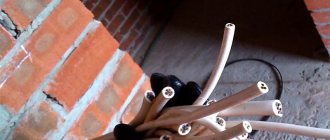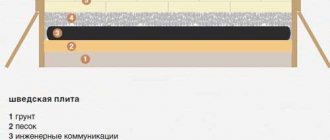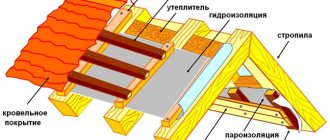What is phase, neutral and grounding
Ground wire - has yellow-green insulation.
The chandelier can be connected to two, three or even four wires. They all come out of the ceiling. If there are at least three of them, then one will be grounding. This wire is called “ground”. There is no tension in it. The grounding wire protects a person from electric shock. It is quite difficult to confuse it, because its insulation is yellow-green both in Russia and in other countries. On electrical diagrams it is designated by the Latin letters “PE”.
Note! Electrical cables with grounding are always laid in new buildings. In old houses, “earth” is found only after replacing the electrical wiring. If you are connecting a chandelier with 3 wires, one of which is grounding, then you can ignore the yellow-green wire or connect it to the same one in the ceiling.
A phase is a conductor whose insulation is often brown, black or white.
However, manufacturers also use other color solutions. It is in phase that the current moves to the consumer. On electrical diagrams it is designated by the letter “L”. The neutral wire is the neutral. It is used to move electric current in the opposite direction. The neutral wire usually has blue or cyan insulation. On electrical diagrams it is designated by the letter “N”. Zero is also necessary to equalize the phase voltage in the wiring.
When determining phase and zero, you do not need to rely on the color of the wires. To do this, you need to use a special screwdriver with an indicator. The tool may have a power key. To determine phase and zero, the ends of the wire strands are first separated in different directions so that there is no contact between them. Then an indicator screwdriver is applied to each of them. When you touch a phase, the indicator on the instrument will light up. However, it will not light up when contact with zero occurs.
You can also use a multimeter to determine phase and neutral. This device is called a tester, which is used to test the wires. When using it, the switch on the device must be set to the “volts” position. Then the scale “more than 220 V” is selected. Then the probes of the device are simultaneously applied to two wires. If they are phases, then the device will display zeros, since such wires are not connected. When the probes are applied simultaneously to the neutral and phase, 220 V will appear on the device.
Advice! After determining zero and phase, it is recommended to turn off the machine in the electrical panel. To avoid getting confused when connecting the chandelier, you need to mark the wires with electrical tape or a marker.
What are the consequences of missing or incorrect grounding?
There is an opinion that a significant part of the rules in state standards are redundant. In some cases, one can agree with this statement. As a rule, justified concessions require enormous experience and thorough knowledge of the equipment used. And this is not always possible in the current era of diversity. In addition, the consequences of non-compliance with the rules turn out to be very dire - as in such cases they usually say: “written in blood.” And a reasonable question arises - is it worth the risk if you can simply follow the PUE and GOSTs? Each master makes his own decision. But you should adhere to the rule: professionals do not have the right to risk the life and health of other people!
Neutral or phase on the switch?
At first glance, the connection diagram for a chandelier when there is a zero break is the same as when installing a switch in a phase. However, in the first case, the lamp is always energized. Therefore, there is a possibility that a person will get an electric shock while performing work. This can happen when replacing a burnt-out lamp or while connecting a lighting fixture. In addition, if the insulation or electrical connections inside the chandelier are damaged, there is a possibility that the conductor will short out to the housing. In this case, during contact with the lamp, a person will feel a strong electrical discharge. Its consequences can even be fatal under certain conditions. Therefore, we advise you to check in advance which wire the switch breaks and if it is zero, then change it to a phase in the junction box.
Electric shock protection classes
According to section 7 of GOST IEC 61140-2012 “Protection against electric shock. General safety provisions for installations and equipment"
, protection against electric shock is provided by the design measures applied to electrical equipment and devices, together with the methods of their installation.
Depending on the method of providing protection, devices are classified into classes from 0 to III. Let's consider them in more detail - as applied specifically to lamps as described in GOST R IEC 60598-1-2011 “Lamps.
Part 1. General requirements and test methods" . But first, a few more definitions:
Insulation of live parts that provides basic protection against electric shock. Those. This is the insulation of the conductors themselves through which electric current flows.
Self-insulating material designed to provide protection against electric shock if the primary insulation fails. It can be, for example, a durable case made entirely of insulating material, which covers almost all metal parts.
Insulation consisting of basic and additional.
A single insulation system for live parts providing protection against electric shock equivalent to double insulation. It may consist of several layers, which, however, are not considered separately from each other.
Protection class luminaire 0 (only applicable for conventional luminaires)
In this luminaire, protection against electric shock is provided by the basic insulation. Connection of accessible conductive parts, if any, to the protective grounding wire of fixed wiring is not provided. The protection function in case of damage to the main insulation is performed by the outer shell.
Those. If for some reason the insulation of a live wire inside the lamp is damaged (for example, due to aging, mechanical damage, etc.), then it will remain safe only thanks to the outer sheath.
A table lamp is an example of an electrical appliance with protection class 0
An example of a lamp with protection class 0 is an ordinary table lamp, plugged into a socket with a two-pin plug. It does not provide any additional grounding, and all protection against electric shock includes a housing made of insulating material (plastic, for example) or metal, separated from the voltage by the insulation of the wires themselves.
Types of wire connections
It is necessary to connect the wires according to existing rules. After all, such places are characterized by high resistance, which leads to their strong heating. Correct connection will ensure safe and trouble-free use of the luminaire. This work is done using:
- Soldering, which is carried out after twisting the wires, but with experience, solder, flux and a torch.
- Welding performed after twisting homogeneous cores and using a special transformer. Work is carried out using electrodes and protective equipment (goggles, gloves).
- Crimping carried out using press tongs using connecting copper, aluminum or copper-aluminum sleeves.
- Bolts that allow you to connect copper and aluminum wires. However, a steel washer must be placed between the cores.
- Screw terminal blocks used for connecting homogeneous and dissimilar conductors.
- PPE caps made of plastic with internal springs that compress and fix homogeneous wires.
- Self-clamping terminals that allow you to make quick-release connections of homogeneous and dissimilar wires by pressing special levers on the products.
Important! It is impossible to connect wires made of aluminum and copper directly, because the materials are galvanically incompatible. At the point of their contact, even at a low level of humidity, an electrochemical reaction begins to occur. As a result, the compound oxidizes and begins to heat up. This leads to melting of the insulation, short circuit or burnout of the wire.
Round
As for the second group of round chandeliers, they are much more diverse. These models are completely different from each other.
In design, they resemble bunches of rowan berries or grapes. The light field of such lamps diverges from the center.
Such chandeliers make the lighting in living rooms diffused. They can also highlight a specific area in the room - for example, the surface of a coffee table or desktop.
Types of connection
If the lamp has two wires, the chandelier is simply connected to phase and neutral. In this case, it does not matter where each core will be connected. Two phases can also come out of the ceiling when a two-button switch is installed. In this case, the conductors are combined and then connected to one of the wires of the lamp. This option will allow you to turn on the chandelier with any key, and turn it off with two at once. You can also insulate one phase and connect the second to the lamp wire. With this design, the light will turn on exclusively with one switch button.
Connection to a single switch
Do-it-yourself installation of a chandelier is greatly simplified if two wires come out of the ceiling, one of which is broken by a switch. However, there can be a lot of them in a lamp. When the wires in the chandelier are of only two colors, first the bare ends of the conductors with single-color insulation are twisted. Then they are connected to the ceiling phase or neutral. Exactly the same actions are performed with the second single-color wires in the lamp. According to this connection diagram, all the light bulbs in the lighting device are turned on simultaneously.
Video of connecting a chandelier to a single switch
How to connect a lamp to a double switch
Often a chandelier with 5 arms is connected. Often it is also necessary to install a three- or four-arm lamp. In this case, a two-key switch is installed on the wall. All such lighting devices use the same connection diagram.
Each lamp horn contains two wires of different colors. To properly hang a chandelier and connect the wires to a double switch, you need to connect them to one neutral and two phases in the ceiling. In other words, it is necessary to divide the electrical wires in the lamp into three groups. This connection diagram allows each switch key to light a certain number of lamps in the lighting fixture. In this case, the conductors are divided into two groups arbitrarily at their discretion.
Video of connecting a chandelier to a two-key switch
Connecting a chandelier with a fan
Now it is fashionable to install a ceiling light combined with a fan. This device will be especially useful in hot weather. Before connecting a fan with a chandelier, you need to study the device datasheet. From it you can find out the color designation of electrical wires. The passport also indicates the connection diagram.
You can start the fan together with turning on the lamps or separately from them. In the first case, a single switch is installed, and in the second, a product with two keys is installed, which divides the phase into two conductors.
Connecting LED chandeliers
Nowadays it is also fashionable to install lamps with diodes. They consume minimal electricity and emit interesting light. The connection of the LED chandelier is carried out according to the diagram from the passport. Diode elements require low voltage power to operate. To obtain it, a step-down transformer is used, which is included with the lighting device. It is this that receives 220 V from the home electrical network.
Connecting a chandelier with a remote control
The connection diagram for a chandelier with a remote control is distinguished by the presence of a control unit. They are equipped with certain models of LED and halogen lamps. The connection itself is made by connecting the two free ends of the wires in the lighting fixture with the phase and neutral on the ceiling. The ease of the process is explained by the fact that manufacturers assemble the entire circuit in the factory during the manufacture of the chandelier with a remote control. It is completely ready to connect.
Note! A lamp with a remote control always has a third thin conductor. This wire serves as an antenna, thanks to which communication between the remote control and the control unit is carried out.
Lamps in a line
In the first case, several lamp lamps are placed on the same line - some models reach three meters in length.
The spot of light is evenly distributed throughout the entire length of the chandelier. This option is perfect for a bar or dining table: one chandelier is quite capable of providing uniform lighting to a long narrow corridor.
Lamp type
When choosing a chandelier, you should also pay attention to the type of lamps used. Unlike their predecessors, modern lamps do not have such disadvantages as noise and flicker. Their only drawback is the white, cold light, which tires the eyes.
Of the types described above, the most popular is the incandescent lamp. This classic is used by people who want to save money. However, despite the low cost and the availability of various options, the lamp as a whole is unprofitable and impractical, since it has low efficiency and can melt or crack if the power is incorrectly calculated.
Halogen lamps are usually used to create powerful and clear lighting, as they emit a stream of powerful and bright light. You need to think seriously about how to choose a halogen lamp, since saving on replacing them can bring discomfort to your home.
Fluorescent lamps are used when bright and even lighting is needed, for example in the kitchen. The main advantages of these lamps include high power, good efficiency and long service life.
The main disadvantage of such a lamp is its ability to quickly tire the eyes with its evenness and coldness.
Technical characteristics of the chandelier
When choosing a chandelier, you need to pay attention to its technical characteristics:
- Energy consumption - we advise you to give preference to more economical models.
- How many switching modes are used and whether the lighting power is adjustable.
- Features of cartridges. They differ both in the diameter of the connector - standard or minion - and in the material. The cartridge can be made of ceramic, carbolite or heat-resistant plastic. The cartridges differ in the maximum heating temperature and the maximum power of the lamp suitable for them.
Chandelier design
In order to choose the right chandelier, it is necessary to study in detail the design of various models.
Frame
It is a suspension or a base with a base where the horns meet. At the bottom of the body there are sockets to which the lamp and diffuser are attached.
There is a plug at the top that hides the connection point between the device wires and the electrical wiring of the house.
Reflectors
These elements are not found on all models. They have a mirror surface - reflecting from it, the light spreads throughout the space.
Diffusers and lampshades
The main task is to evenly distribute the light of the lamp. Keep in mind that the chandelier may not have these parts.











